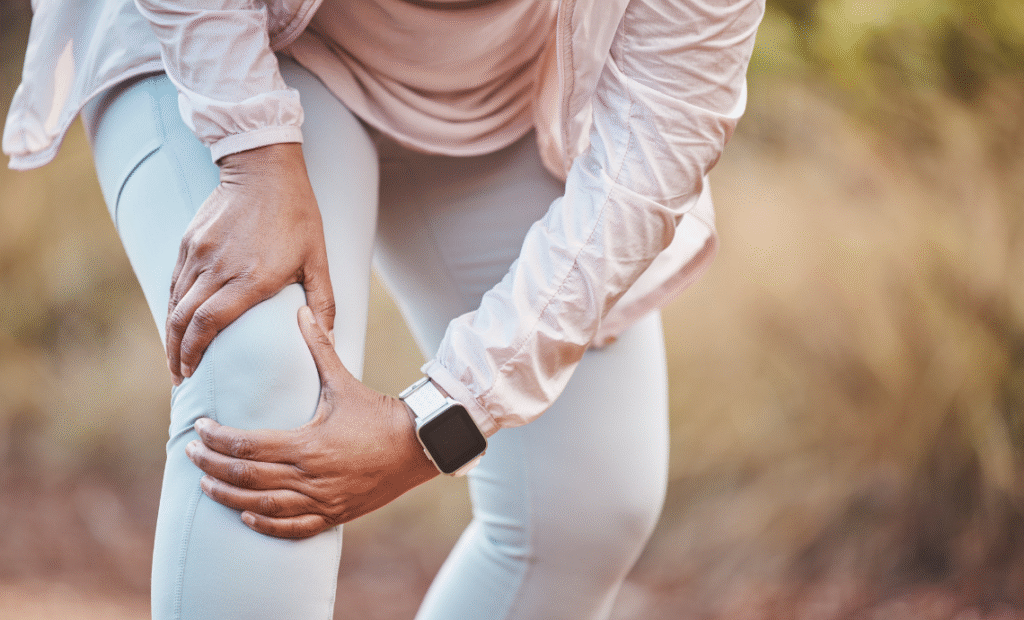Knee pain is one of the most common complaints among people of all ages. While it may start as a dull ache, over time it can grow into a condition that disrupts everyday tasks. Simple movements like walking to the store, climbing stairs, or even standing for a short time may suddenly feel like a challenge. But why does knee pain affect activities so deeply, and what can be done to manage it? Let’s break it down.
Why Does Knee Pain Affect Activities of Daily Living?
The knee is one of the largest and most complex joints in the body. It supports almost all of your weight during movement. That’s why knee pain affect activities like walking, climbing, or even standing for a long period—because the joint is constantly in motion and under pressure.
When pain strikes, your body naturally tries to compensate by shifting weight or changing posture. This often causes strain in other areas such as the hips, lower back, or ankles. Over time, these changes add to the daily challenges with knee pain and make mobility even harder.
Common Causes Behind Knee Pain
Understanding why knee pain affect activities starts with identifying the root cause. Some common causes of knee pain include arthritis, injuries, overuse, or poor alignment.
- Arthritis: Inflammation of the joint leading to stiffness and swelling.
- Injury or trauma: Damage to ligaments, tendons, or cartilage.
- Overuse: Repetitive stress from activities like running or heavy lifting.
- Poor posture or alignment: Misalignment in the legs or feet affecting knee movement.
Each of these conditions can significantly impact the activities of daily living with knee pain, making even basic mobility frustrating.
How Daily Life is Impacted by Knee Pain
The most frustrating part about knee discomfort is how it creeps into everyday routines. For example:
- Walking: Even short distances may feel tiring, causing you to depend more on vehicles or support.
- Climbing Stairs: This requires extra pressure on the knees, making it one of the toughest tasks when dealing with pain.
- Standing for Long Periods: Whether in a queue, kitchen, or workplace, prolonged standing often increases stiffness and discomfort.
In short, knee pain affect activities that are often taken for granted, limiting independence and lowering quality of life.
Physiotherapy for Knee Pain Relief
The good news is that you don’t have to live with ongoing discomfort. Physiotherapy for knee pain relief offers a structured, non-invasive approach to reduce pain and improve function. Through guided exercises, stretching, and strengthening techniques, physiotherapists help restore mobility while preventing further damage.
Regular sessions target muscle imbalances, improve flexibility, and promote better posture. In the long run, this helps reduce the intensity with which knee pain affect activities like walking and climbing.
Orthopedic Physiotherapy for Long-Term Management
When knee pain becomes chronic, orthopedic physiotherapy is often recommended. It focuses on restoring joint health with personalized exercise plans and manual therapy. Unlike temporary fixes, this method addresses the root cause and improves strength around the knee, ensuring long-term relief.
Orthopedic physiotherapy also plays a role in preparing patients before surgeries like knee replacement and helping them recover faster afterward. By building strength, it ensures activities of daily living with knee pain become manageable once again.
Related Challenges: When Knee Pain Isn’t Alone
Many people who struggle with knee issues often experience other musculoskeletal challenges as well. For example, recurring injuries like sprains can further worsen mobility. In such cases, treatments like ankle sprain physiotherapy at home can complement knee care, ensuring overall balance and stability.
This holistic approach ensures that while knee pain affect activities, patients are not sidelined by additional problems that could have been avoided with the right therapy.
Similarly, home visit physiotherapy provides personalized care for knee pain and other joint problems, making recovery more convenient without the need to step outside.
Knee Pain Treatment Options
Apart from physiotherapy, other knee pain treatment options may include medications, injections, or in severe cases, surgical intervention. However, most healthcare professionals recommend starting with conservative care like physiotherapy, as it provides long-term benefits without side effects.
By addressing the root cause, physiotherapy reduces dependency on painkillers and ensures that the impact of knee pain affect activities decreases gradually.
Lifestyle Tips to Manage Knee Pain
To complement therapy, here are some daily tips:
- Maintain a healthy weight to reduce pressure on the knees.
- Use supportive footwear to improve alignment.
- Practice low-impact exercises like swimming or cycling.
- Apply hot or cold packs for pain and swelling.
- Avoid standing for long hours without breaks.
Making these small adjustments can help ease the way knee pain affect activities and reduce the stress of everyday movement.
Conclusion
Living with knee issues can feel discouraging, especially when simple tasks like walking, climbing, or standing become difficult. However, with the right care—particularly physiotherapy for knee pain relief and orthopedic physiotherapy—it’s possible to regain mobility and confidence in everyday life. Whether it’s addressing the root cause, preventing further injury, or improving overall strength, therapy plays a vital role in reducing how knee pain affect activities in the long run.
At Violet Physio, Gurugram, our expert physiotherapists design personalized treatment plans to help patients overcome knee pain and return to a pain-free lifestyle. Don’t let discomfort limit your life—take the first step toward recovery today.
FAQs
1. What are the best exercises when knee pain affect activities like climbing stairs?
Seated leg raises, wall sits, and hamstring stretches are the best low-impact exercises to improve knee strength without extra stress.
2. Can physiotherapy for knee pain relief avoid knee surgery?
Yes, physiotherapy often strengthens muscles, improves mobility, and reduces pain, which can delay or even prevent knee surgery in many cases.
3. How long does physiotherapy take to reduce knee pain affect activities?
Most people see results within 4–6 weeks of regular sessions, with noticeable relief in walking, climbing, and standing.


